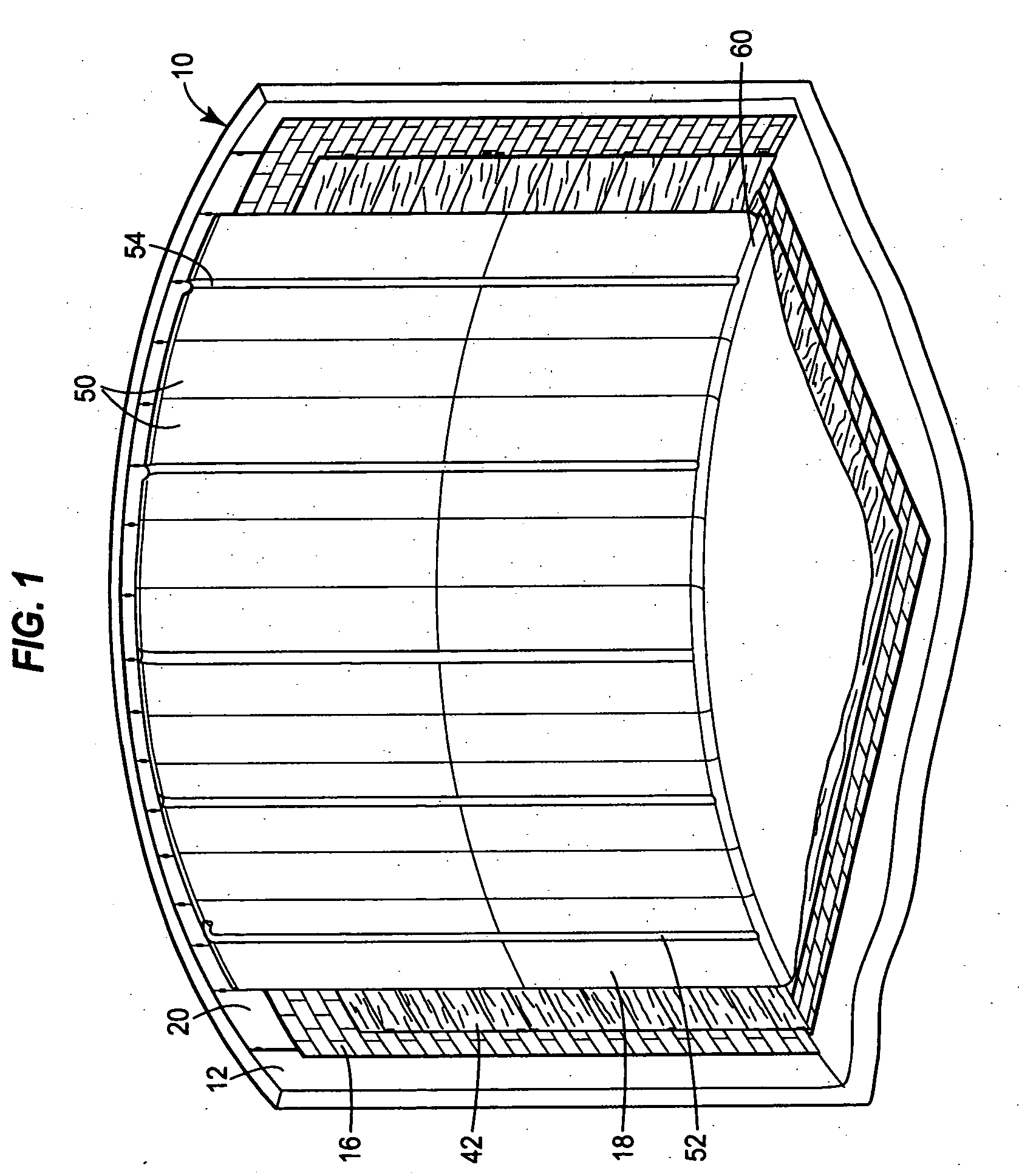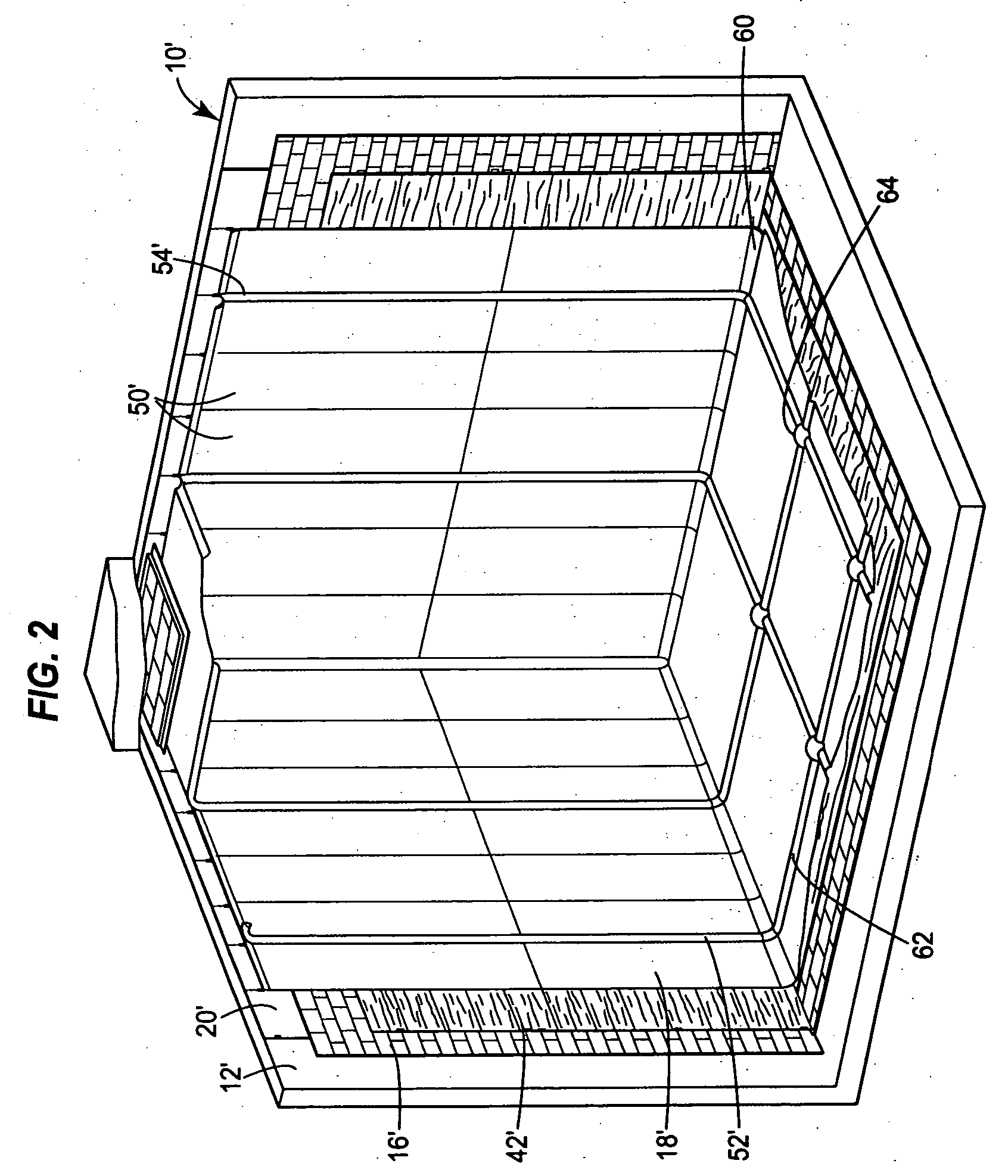Low temperature/cryogenic liquid storage structure
- Summary
- Abstract
- Description
- Claims
- Application Information
AI Technical Summary
Benefits of technology
Problems solved by technology
Method used
Image
Examples
Embodiment Construction
[0026]FIG. 1 shows one embodiment of a low-temperature / cryogenic liquid-storage structure 10 that can be used to store liquefied natural gas (LNG) or other liquids at low / cryogenic temperatures (that is, temperatures of 40 degrees F. or lower). The illustrated structure is a free-standing tank. FIG. 2 shows a similar gravity-based structure 10′ that could be used for storing LNG offshore. The invention might also be used with in-ground tanks and ship tanks.
[0027] The sides of each illustrated structure 10, 10′ include four basic components: an outer bearing wall 12, 12′, a connection system, load-bearing insulation 16, 16′, and an inner tank liner 18, 18′. Each will be discussed in turn.
[0028] The Outer Bearing Wall
[0029] The illustrated outer bearing wall 12 in the structure 10 seen in FIG. 1 and in more detail in FIG. 3 is a conventional reinforced concrete wall, 60 to 140 feet tall and 20-36″ thick, with a 100-300 foot diameter. A 3-5 mm thick carbon steel liner 20 on the insi...
PUM
 Login to View More
Login to View More Abstract
Description
Claims
Application Information
 Login to View More
Login to View More - R&D
- Intellectual Property
- Life Sciences
- Materials
- Tech Scout
- Unparalleled Data Quality
- Higher Quality Content
- 60% Fewer Hallucinations
Browse by: Latest US Patents, China's latest patents, Technical Efficacy Thesaurus, Application Domain, Technology Topic, Popular Technical Reports.
© 2025 PatSnap. All rights reserved.Legal|Privacy policy|Modern Slavery Act Transparency Statement|Sitemap|About US| Contact US: help@patsnap.com



